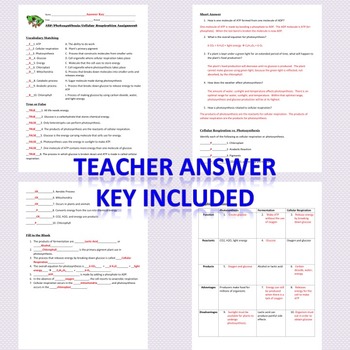Cellular Answer Key Study Guide

The basic unit of structure and function in the human body is the ____ cell _______ 3. Describe each of these processes: phagocytosis - consuming large food particles, pinocytosis - consuming large liquid particles, exocytosis - pushing waste or vesicles out of the cell 4. What is the difference between active transport and passive transport?
Give a specific example of each type. Active transport - requires energy ATP; sodium-potassium pump, endocytosis, exocytosis passive transport - does not require energy; diffusion and osmosis 5. Describe the process of making and exporting a protein from a cell. Proteins are made by the ribosomes and then transported through the endoplasmic reticulum where they are packaged into vesicles by the golgi apparatus. Vesicles are exported out of the cell (exocytosis) 6.
Cell Study Guide- Answer Key study guide by Dejah_Tharp includes 16 questions covering vocabulary, terms and more. Quizlet flashcards, activities and games.

Describe the cell membrane and its properties. What is its function? The cell membrane is selectively permeable, it consists of phospholipids and proteins arranged in a bilayer, it regulates what comes into and out of the cell 7. What is diffusion and facilitated diffusion? What is osmosis? Diffusion is the movement of molecules from areas of high concentration to low, molecules tend to spread out faciliatated diffusion uses proteins in the membrane to help move molecules across osmosis is the diffusion of water 8.
List and describe the stages in the life cycle of a cell. Interphase - resting phase, cell makes a copy of DNA prophase -chromatin condenses in chromosomes, spindle forms metaphase - chromosomes line up along the equator anaphase - chromatids separate telophase - cell begins to pinch inward, nuclear membrane reforms, spindle disappears; cytokinesis begins. What is the centriole and the spindle and what is their role in cellular reproduction? Structures that move chromosomes so that each new daughter cell gets the correct number 10. What is the difference between chromosomes, chromatin, and chromatids? Chromosomes look like X's and appear during prophase, chromatin is DNA, a chromatid is a single copy (half of the X) that is visible during prophase and eventually separates during anaphase 11. What is DNA and what do the letters stand for?
Cell Membrane Study Guide Answers
Deoxyribonucleic acid 12. Explain the process of cellular respiration and why it is important for the cell. Cellular respiration uses oxygen and glucose to create ATP, ATP is necessary for many of the cell function, like the active transport. Respiration occurs in the mitochondria. What is the difference between hypertonic, hypotonic, & isotonic?  What will happen to cells placed in each type of solution? Isotonic - solution has an equal concentration as the cell, no net movement hypertonic - solution has a greater number of solutes, this causes water to move out of the cell hypotonic - solution has fewer solutes, this causes water to move into the cell Remember the rule: SALT SUCKS.
What will happen to cells placed in each type of solution? Isotonic - solution has an equal concentration as the cell, no net movement hypertonic - solution has a greater number of solutes, this causes water to move out of the cell hypotonic - solution has fewer solutes, this causes water to move into the cell Remember the rule: SALT SUCKS.